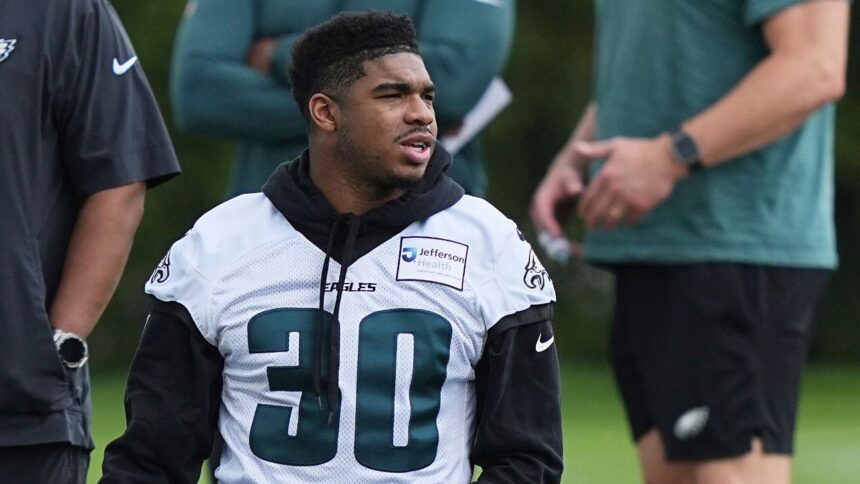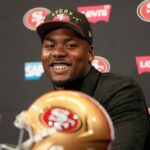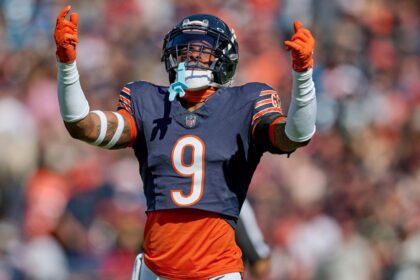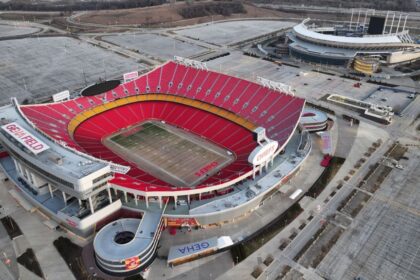The 2025 NFL draft is already history, and the league’s 32 teams have begun to closely analyze their draft picks and free agents selected through rookie minicamps. We’ve spent the week following the draft’s conclusion talking to executives, scouts, and coaches from across the NFL, to gain clarity on how some of the key members of the 257-player draft class of 2025 fit in.
We also explored almost all the transfers, the teams’ draft strategy, information on key players, and implications for this year.
NFC East
Dallas Cowboys
Some in the league believe that receiver Tetairoa McMillan would have been Dallas’s pick if he had been available. “He would have been an option,” according to a source. But, quietly, some rival teams thought Tyler Booker fit the Cowboys’ profile as a sensible offensive lineman with pedigree. Dallas tried to trade down from the 12th pick, but couldn’t finalize a deal.
Meanwhile, third-round cornerback Shavon Revel Jr. was considered one of the best value picks in the entire draft. “I thought there would be a big drop-off at the cornerback position after him, which is why I thought he had a chance to be picked late in the first or early in the second round,” said an AFC team executive.
A team source said about second-round pass rusher Donovan Ezeiruaku: “Leadership and explosion. Sometimes you see it immediately.” This was a pick that didn’t require too much thought.
New York Giants
The Giants said they settled on Jaxson Dart after Monday meetings of draft week. “At that point, he had checked all the boxes,” a team source said of the Ole Miss prospect. They also decided they wouldn’t trade up above Pittsburgh, betting the Steelers would opt for defense at No. 21.
And when talking with the teams in the 20th positions about a possible transfer, the Giants made it clear that they would not give up the number 65 pick. Houston felt comfortable with that.
While the Giants worked out Shedeur Sanders the week before the draft, Sanders felt long before that New York likely wasn’t in their plans. Sanders openly acknowledged during the pre-draft process that he didn’t get along with the Giants’ coaches, according to a source.
The Giants used the 65th pick for Toledo DE Darius Alexander, whom many scouts had identified as a rising second-round prospect. The Giants are excited to place him alongside Dexter Lawrence. The team decided to lean into the strength of their defensive line with Abdul Carter and Alexander, in part because, as a team source said, “When you think of the New York Giants, you think of how they are built up front.” Giants tight ends coach Tim Kelly worked privately with Thomas Fidone II before the draft and really liked what he saw. Fidone is a former five-star high school recruit, which intrigued New York. Injuries slowed him down in college. Perhaps there is untapped potential. The Giants are expected to use fourth-round running back Cam Skattebo as a receiver, as well as a runner. They like his ability to track the ball.
Philadelphia Eagles
General Manager Howie Roseman broke with precedent by selecting a true off-ball linebacker in the first round. Philadelphia hadn’t done so since Jerry Robinson in 1979, but Jihaad Campbell was too good to pass up. Several teams viewed him as a top-10 talent, but had concerns about his durability after multiple injuries in college. The selection of Campbell demonstrates that the Eagles trust defensive coordinator Vic Fangio and his staff to develop young players at all positions.
Last season’s experience with Quinyon Mitchell and Cooper DeJean should help the Eagles transition defensive rookies Andrew Mukuba and Mac McWilliams. Philadelphia will put them in positions to compete and let the results play out over time, without forcing them into specific roles too soon. The Eagles love Mukuba’s instincts, field vision, and ball awareness, along with McWilliams’ man-to-man coverage skills and physical style of play.
With quarterback Kyle McCord in the sixth round, the Eagles had enough interest that Roseman personally called Syracuse offensive coordinator Jeff Nixon to get pre-draft information on the prospect.
Washington Commanders
Washington got an additional headline with second-round safety Trey Amos, who has size, speed, and instincts. Selecting him at number 61 was considered great value. One aspect that might have slightly affected his value: several teams discovered a back injury in the pre-draft process. This was not a major red flag for some teams, but rather a slight concern that “probably made him fall a bit,” as one AFC executive said. However, people close to Amos and the Commanders did not seem overly concerned about it.
First-round offensive lineman Josh Conerly Jr. gives Washington flexibility on its right side. He can compete with second-year player Brandon Coleman at right tackle, and Coleman could move to guard eventually. Veteran Andrew Wylie is also still in the mix.
NFC North
Chicago Bears
Chicago silenced trade calls with the selection of Colston Loveland at No. 10. I’ve heard from multiple teams that said the lack of a trade from pick 3 to 25 was in part because Loveland came off the board. Had he made it into the twenties, someone would have made a move. While Penn State’s Tyler Warren was the bigger name, Loveland’s traits and potential fueled the draft week buzz that he was the best tight end in this class.
Some within the league believe the Bears tried to make an early move in the second round, possibly to move up four spots to Tennessee’s pick at No. 35. Knowing Chicago’s field work on running backs, Ohio State’s TreVeyon Henderson would have made a lot of sense in that regard. While Chicago has been linked to free agent running backs, teams typically like to see what their rookies can do first in May and June, with live field reps, a great opportunity for seventh-round running back Kyle Monangai, who has an intriguing skill set.
Detroit Lions
One of the most compelling stories of the second day was that of Detroit, which moved up 32 spots at the beginning of the third round to draft a receiver with 28 receptions last season at Arkansas.
But Isaac TeSlaa is an excellent example of why the pre-draft process is important. TeSlaa wasn’t on the draft radar and had to work hard to get an invitation to the Hula Bowl, which led to an invitation to the Senior Bowl. He performed well in both, then caught the attention of scouts at the combine by running a 40-yard dash in 4.43 seconds at 6 feet 4 inches and 214 pounds.
If TeSlaa hadn’t received that invitation to the Hula Bowl, his draft position would have been very different. But once teams started to see him up close, they scheduled interviews with him and investigated why he wasn’t getting the ball at Arkansas. It wasn’t due to attitude problems or work ethic: his personality shone through in the process, becoming the favorite player of Detroit’s general manager, Brad Holmes, in the draft. Some attributed his low production in college to lack of communication and inexperience at the quarterback position.
TeSlaa also had great pre-draft processes with the New Orleans Saints (No. 71) and the Buffalo Bills (No. 72), so it didn’t escape TeSlaa that Detroit negotiated directly in front of those two, as well as Denver at No. 74, which went to receiver Pat Bryant.
Green Bay Packers
The fact that the Packers didn’t draft a cornerback during the first six rounds seems to indicate that Jaire Alexander will stay with the team, unless there’s a unique trade offer or a contractual stalemate.
The Packers and Alexander are working on a resolution that should materialize soon. A revised contract for Alexander, who is due $17.5 million in cash this year, to balance his injury history with his long-standing status as an elite cornerback could be the most sensible move.
The selection of Matthew Golden at pick number 23, a first-round receiver for Green Bay for the first time since 2002 (Javon Walker), was simply too good to pass up. Golden entered the draft believing that picks 10-20 would be his range.
Fourth-round pass rusher Barryn Sorrell was one of two FBS players to produce at least 40 pressures and at least 10 run stops.
Minnesota Vikings
Entering the draft with four selections put Minnesota’s strategy in the spotlight. The Vikings had built a fairly solid depth chart, knowing they had few picks, which relieved the stress of having to fill holes. The No. 24 pick filled the only major hole, left guard, with Donovan Jackson from Ohio State.
That left the Vikings in a position to take some upside plays. Third-round receiver Tai Felton fits that mold. The Vikings had intimate knowledge of Felton coming out of Maryland’s pro day, which Minnesota receivers coach Keenan McCardell helped run. McCardell was able to get a close look at Felton. Felton’s 40-yard dash of 4.37 seconds and his nearly 40-inch vertical make him an intriguing target for Minnesota quarterback J.J. McCarthy, and for a receiver room facing some questions: Jordan Addison was arrested and charged with DUI last summer, which could result in an eventual suspension, and Jalen Nailor is a free agent in 2026.
The Vikings got to work on a Sam Howell trade a week before the draft. The groundwork was done by the time Day 3 arrived. Howell, with the Seahawks last year and a starter as a rookie with the Commanders in 2023, is the next student in Kevin O’Connell’s quarterback rehabilitation school.
NFC South
Atlanta Falcons
Atlanta’s return to the first round to secure pass rusher James Pearce Jr. was perhaps the boldest move of the week.
Forfeiting the franchise’s 2026 first-round pick carries risks, which the Falcons were willing to accept to have the opportunity to address their uneven pass rush once and for all.
Walker was considered one of the safest draft picks, and Pearce, if he maximizes his immense ability, has star potential.
“What concerns me is that they gave up a first-round pick for a player with character issues,” said an NFC executive.
NFC Executive
Pearce was considered a divisive figure in the draft process. Sources told ESPN that Pearce was off multiple teams’ draft boards due to maturity issues.
But Atlanta spent significant time with the player in the pre-draft process, investigated any concerns, and feels good about his ability to assimilate into the NFL.
“He’s a fun player to watch,” said a veteran AFC scout. “Very explosive. I think [coach] Raheem [Morris] will do a good job relating to him and keeping him on the right track. He’ll need to have a plan for him.”
AFC Scout
Carolina Panthers
Carolina’s No. 8 selection felt like a moving target. The Panthers were linked to Georgia’s Jalon Walker for a while, and I believe the love for him was real. In the end, however, taking a smaller front-seven player (6-foot-1, 243 pounds) was a problem. Some in the building were intrigued with Ole Miss defensive tackle Walter Nolen. And I believe if Mizzou right tackle Armand Membou were there, the Panthers would have given it a lot of thought.
Carolina had trade conversations with multiple teams, including San Francisco (No. 11), about a possible trade, but the team decided they did not want to lose Tetairoa McMillan.
The Panthers got their much-needed defensive help with pass rushers Nic Scourton and Princely Umanmielen. These are two different picks for Carolina. Scourton has the mindset to be a consistent and productive pro right away. Umanmielen is a developmental play, as the Panthers believe he can be a double-digit sack guy, but he needs to get stronger and dedicate himself more to a complete game, not just when pass rushing.
New Orleans Saints
New Orleans went offensive line in the first round for the second straight year, but this particular move made sense around the league because Kelvin Banks Jr., in the eyes of scouts, was a clear top-10 pick, even though many mock drafts had him in the twenties throughout the process. “He’s incredible. He’s [five-time Pro Bowl tackle] Laremy Tunsil,” said an NFC executive.
An AFC executive said of second-round quarterback Tyler Shough: “He was a hot name on the second day. It seems like he would have gone pretty quickly if it weren’t for New Orleans. He has some of what [new head coach] Kellen Moore [likes], intelligence at the position, good makeup. He’ll need to improve his accuracy at the next level.”
Seventh-round pass rusher Fadil Diggs is an interesting name to keep an eye on: he has Elijah Robinson’s stamp of approval. Robinson, former Texas A&M defensive line coach and now Syracuse defensive coordinator, has developed a significant pipeline of NFL talent. While at A&M, he recruited Walter Nolen, Shemar Stewart, and Shemar Turner, all of whom were selected in the first two rounds of the draft. He coached Baltimore Ravens star Nnamdi Madubuike. Diggs, for his part, was a three-time captain for Robinson’s teams, twice at A&M and once for Syracuse after a 2024 transfer. So, while seventh-round players aren’t guaranteed roster locks, Diggs brings solid experience and leadership.
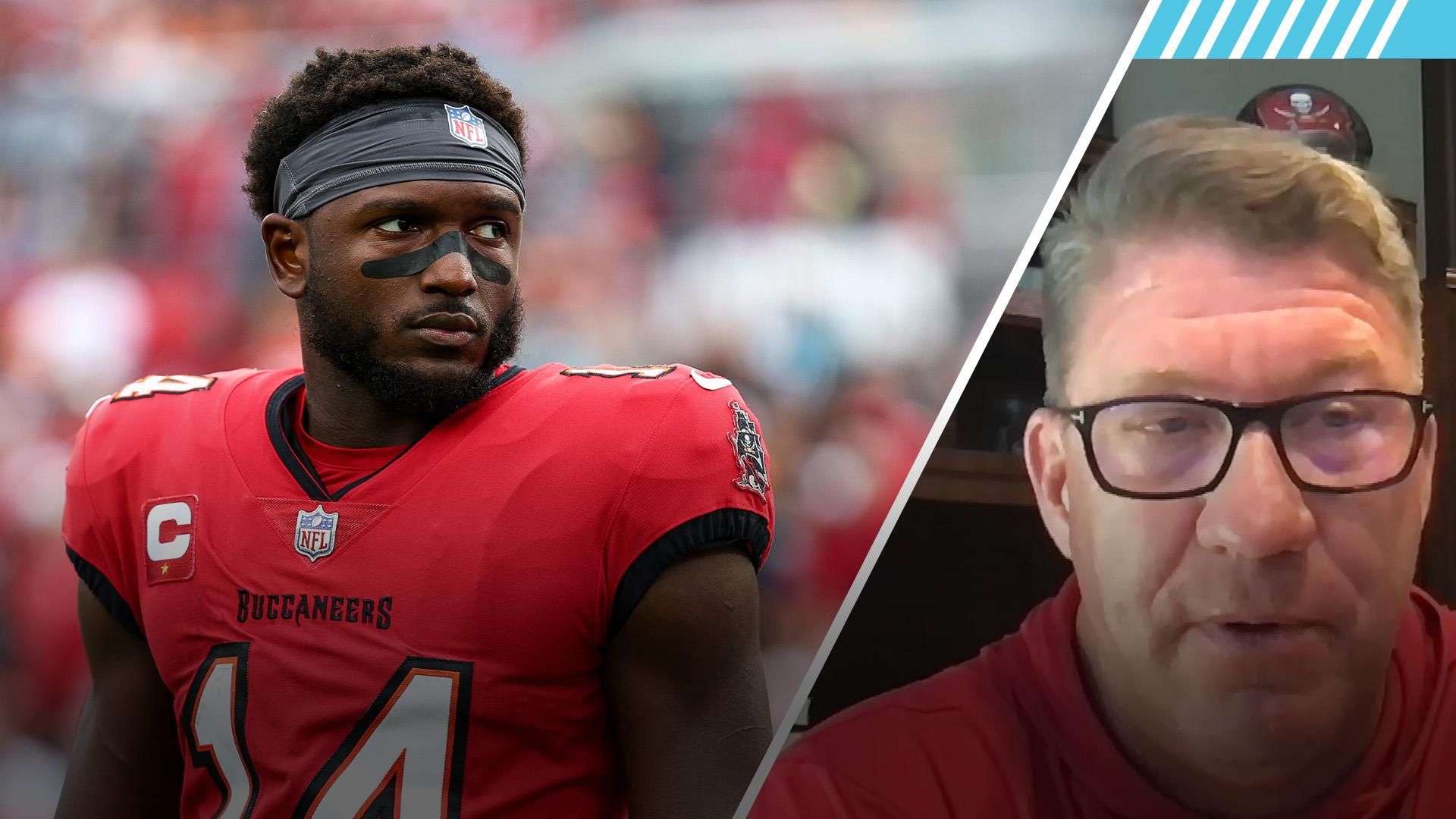
Caption: 1:03Bucs GM expecting Chris Godwin back in Week 1Buccaneers general manager Jason Licht voices confidence that Chris Godwin will be ready for Week 1.
Tampa Bay Buccaneers
Third-round cornerback Jacob Parrish may be considered a winning selection for Tampa. I spoke with some teams before the draft that included him as a sleeper for the end of the first or the beginning of the second, although some obviously thought he was too expensive.
“His size [5 feet 9 inches] is an issue, but nickels are more frequent, and his ceiling is high due to speed and traits,” said an NFC executive.
NFC Executive
The Bucs were linked to slot cornerbacks like Mike Sainristil (Commanders) and Dru Phillips (Giants) in last year’s draft, so getting Parrish is the culmination of that fieldwork.
The Bucs are very excited about veteran cornerback Zyon McCollum entering year 4, but they were intentional about adding two cornerbacks on day 2 (including Benjamin Morrison from Notre Dame in the second). Head coach Todd Bowles wanted better depth coming out of last year.
The Bucs really loved Alabama linebacker Jihaad Campbell, but like other teams, the overall medical profile was a bit concerning. Cornerback Maxwell Hairston, who went No. 30 to Buffalo, also had some love at One Buccaneer Place. But the team’s eventual pick at No. 19, receiver Emeka Egbuka, satisfies two areas: he was considered an A-plus prospect and helps curb concerns whenever Mike Evans decides to retire.
NFC West
Arizona Cardinals
Second-round cornerback Will Johnson was a polarizing figure before the draft. He showed first-round talent at Michigan, but he didn’t run a 40 before the draft and had to deal with injuries in college, including a knee issue that arose in the pre-draft process.
Part of the problem: the knee was flagged in the combine tests, the results of which teams usually get in mid- or late April. That caused some teams to pause and resulted in a slide out of the first round. Still, executives predicted Johnson would go in the second half of the first round. That didn’t happen.
In the hours leading up to day 2, some teams that considered Johnson still had questions. Arizona was fine with the issues and, as a result, Johnson had the team circled as a strong possibility at the start of the second round. Johnson played through the knee issue at Michigan, where he became a national champion and the defensive MVP for the Wolverines. If that level of play continues, Arizona just got first-round value in the second round.
In the first round, the Cardinals had their eyes on the eventual selection Walter Nolen

